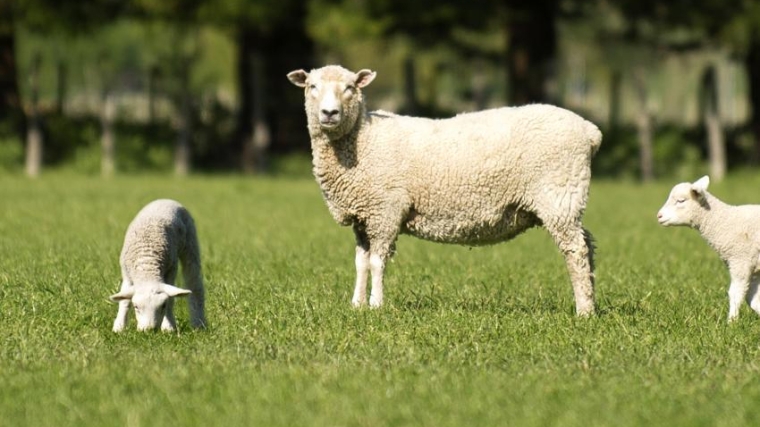
By Angus Kebbell
New Zealand pasture-based production systems offer a lower-cost farming system that produces high quality food.
Elsewhere, many sheep production systems are fully or partially housed management systems which use high inputs of concentrate or conserved forages and many of these systems are relatively small. Therefore, artificial rearing systems commonly available have been developed to suit these systems rather than where animals are largely managed in outdoor pasture based grazing systems.
These international housed systems are intensive with much higher production costs than you find here in New Zealand.
Senior Scientist in the Animal Nutrition & Physiology at Ag Research, Sue McCoard, has found some key findings in lamb survival and performance. Some of these findings are outlined below:
Lamb survival is a complex trait and is strongly influenced by the genotype, nutrition and management of the ewe and the surrounding environment.
Good breeding is important to provide the production potential – nutrition is critical to realise that potential! Important traits that can influence lamb survival are:
- Litter size – losses increase as litter size increases.
- Embryo survival – influences litter size.
- Nutrition/health – of both the ewe and her lambs.
- Birth weight – greater losses at birth weight extremes (heavy or light).
- Thermoregulation – especially important in the first 3 days of life.
- Behaviour – e.g. formation of the ewe-lamb bond.
- Lactation (colostrum/milk) – the lamb is 100% reliant on colostrum/milk to survive.
- Stress – can influence health, metabolic function and immunity in the dam and lamb.
- Weather and shelter – influences utilisation of body reserves in the dam and lamb.
- Topography – can provide challenges and opportunities.
- Genotype – influences litter size; lamb survival has poor heritability but other traits are influenced by genetics e.g. birth weight.
Body condition score is a useful monitoring tool that is easy to use to evaluate the effectiveness of feeding and management regimes being applied on-farm, and as a tool to support feed budgeting.
Body condition is a function of muscle (red) and fat mass (yellow) in the animal, and thus reflects their level of nutrition and health.
Under-feeding, either through insufficient feed allowance, imbalanced diets (e.g. protein, energy or mineral/vitamin deficiency), physiological state (e.g. pregnancy) and health issues (e.g. parasitism) affect ewe body condition score. This in turn influences her health and wellbeing (e.g. reserves to cope with short-term feed shortages like snow fall).
Key points:
- Maintain a good body-condition score year-round - 3-4 is ideal to meet the needs of the animal and improve feed resource use by targeting the right feed to the right animal at the right time.
- Ewe live weight is not a good indicator for nutritional management unless it is undertaken regularly and live weight changes over time are monitored for individual animals.
- A fat ewe with a small frame can have a similar live weight to a larger but skinny ewe!
- Wool hides a lot of sins! Eyeball analysis of body condition is very risky unless the ewes have a small amount of wool (e.g. at shearing). The best approach is to physically determine body condition score through palpation.
- Consider body condition scoring pre-mating to establish which ewes need additional feeding before joining with the ram.
- Draft off light ewes (below condition score 3) and preferentially feed and/or consider supplements (e.g. grain).
- When enough pasture is available to meet animal requirements, it is only the poorer condition ewes that will benefit from grain supplementation (i.e. to increase ewe condition and lamb survival).
- Consider body condition scoring at mating, pregnancy scanning and set stocking to monitor changes and to identify any ewes that need to be preferentially fed.
Ewe pregnancy nutrition and management is critical and McCoard outlined some more key points
- Meeting nutrient requirements = better ewe lactation, better survival and bigger lambs.
- Nutrient requirements increase with advancing gestation, especially in the last 6 weeks before lambing – this is not the time to reduce feed allowance or feeding low quality feeds.
- Restricting nutrition in the last 6 weeks of pregnancy (amount and quality), especially in multiple-bearing ewes, can negatively affect:
- Fetal growth – resulting in lower birth weight lambs.
- Lamb vigour – this affects the time taken for the lamb to stand up and feed and ewe-lamb bond formation.
- Thermoregulation – by reducing brown fat deposition (specialised fat store used to generate 50% of the heat that the lamb needs to survive in the first day of life) and muscle mass (used for shivering thermogenesis).
- Ewe colostrum and milk production.
- Nutrient requirements are higher in bigger ewes.
- Nutrient requirements increase with litter size.
- If using crops, measure yield/quality to inform your feed budget and make sure to factor in the need for diet transitions on and off crops to avoid metabolic issues
There is a lot of technical information that has a significant impact on lamb outcomes, having a good knowledge of these things, understanding and applying the knowledge into a farming system could be the difference between having an ok outcome or an exceptional one.
Increasing lamb survival rates and their performance not only has a positive impact on the bottom line but it has a positive impact on the wellbeing of the livestock and indeed the wellbeing of our farmers.
Listen to the podcast above for the full story.
Angus Kebbell is the Producer at Tailwind Media. You can contact him here.

We welcome your comments below. If you are not already registered, please register to comment.
Remember we welcome robust, respectful and insightful debate. We don't welcome abusive or defamatory comments and will de-register those repeatedly making such comments. Our current comment policy is here.